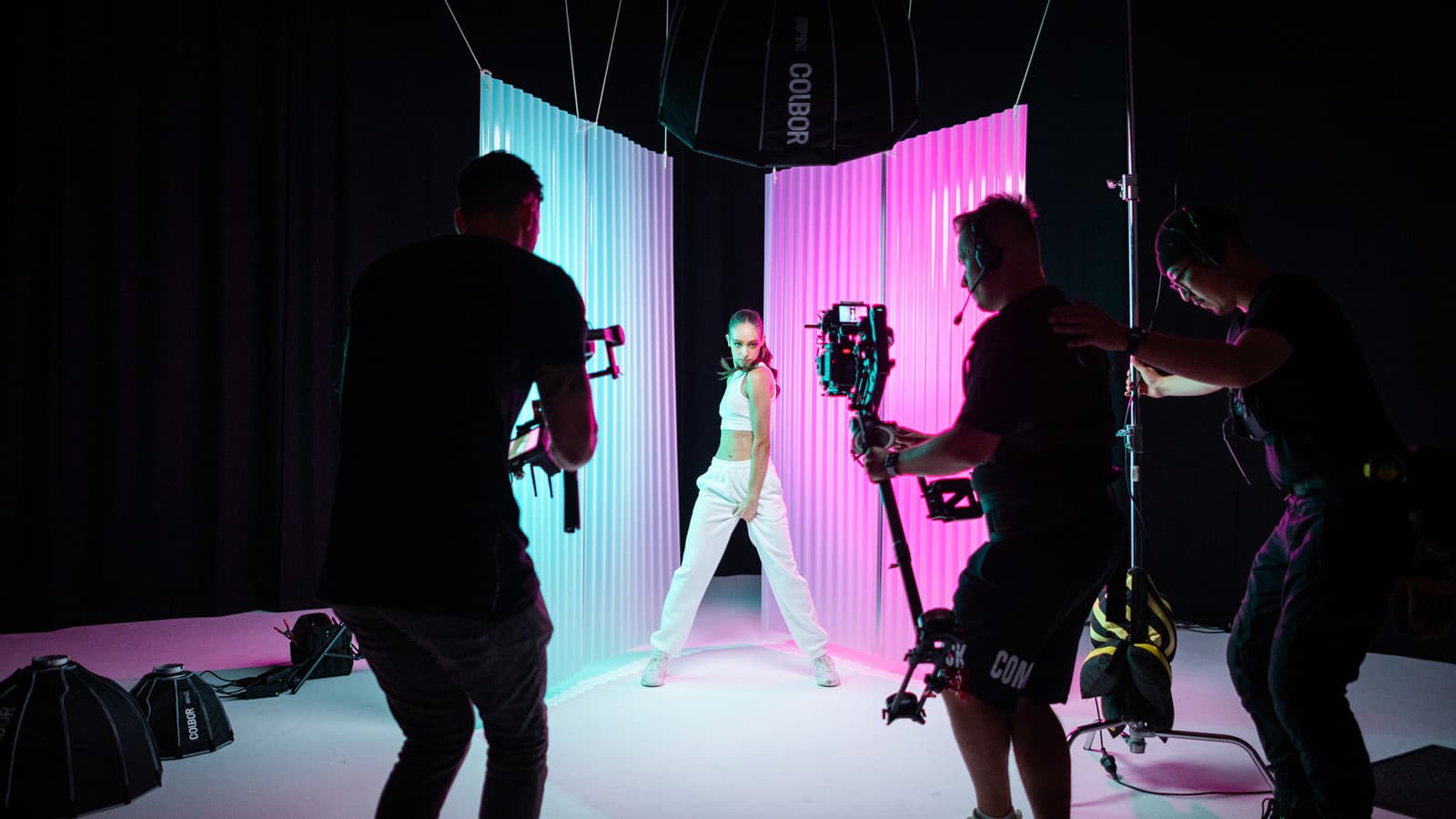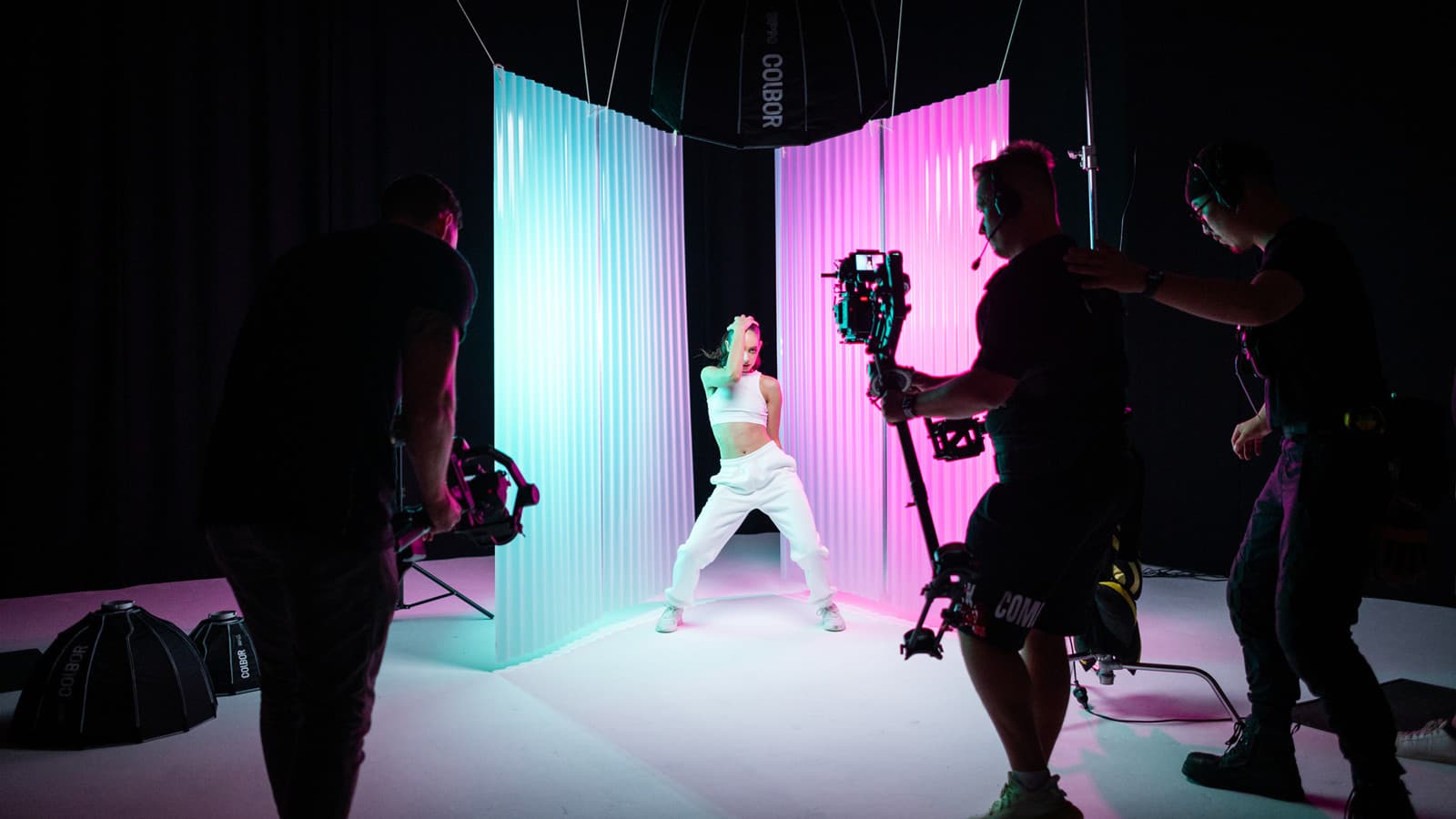Lighting is an effective tool to create mood, ambiance, and emotion in any video production, but it is especially useful in dance videos where movement and rhythm are key. In this post, you will discover several tips and techniques for using lighting for dance video to improve visual impact and narrative, and some tips to illuminate the dance portraits.

Five tips for lighting the dance videos
The key to setting up dance video lighting is to highlight the movement of the dancer and create the rhythm flow in the dance video. Here are 5 tips for you to achieve this target.
1. Understand the role of lighting in dance video
Lighting plays a dual role in video production, serving both technical and creative purposes. It shapes the genre, tone, and style of your video while accentuating the performers' expressions and movements. Moreover, it adds depth, contrast, and texture to your shots, directing focus to particular elements. Additionally, it aids in creating smooth transitions, maintaining consistency, and enhancing the storyline or motif of your performance.
2. Use lighting techniques that illuminate the dancer’s movement well
When producing a dance video, a primary obstacle lies in capturing the dancers' movements dynamically and captivatingly. To avoid a lackluster appearance that may lead to an amateur production, it's essential to employ lighting techniques that infuse motion, direction, and vitality into your footage.
Utilizing backlighting or side lighting can cast silhouettes or shadows, accentuating the dancers' contours and movements. Incorporating moving lights or strobes can yield flashes, flickers, or pulses synchronized with the music or dance's rhythm. Spotlighting and following spots enable you to track performers' movements, instilling focus and drama in your scenes. Introducing RGB LED light and gels allows for the creation of diverse moods, emotions, and atmospheres, while also providing contrast or complementing performers' costumes or props.
3. Establish a rhythmic flow with lighting for dance video
To establish a rhythmic flow in your dance videos, employ lighting that promotes coherence, harmony, and balance. Consistent lighting throughout the dance video might help to create a smooth and seamless rhythm. Alternatively, you might employ contrasting lighting in different scenes or portions of the dance video to establish a clear and distinct rhythm. You may also employ lighting cues or changes to identify beats, accents, or changes in music or dancing, as well as to add syncopation or emphasis to the video making. Finally, you may employ lighting effects or transitions to create breaks, stops, or shifts in your video's pace, as well as to add surprise or tension.
4. Prepare and test lighting for dance video ahead of time
To improve the effectiveness and professionalism of your lighting, prepare and test it ahead of time. Employ a light meter or monitor to ensure optimal exposure, contrast, and color balance, preventing overexposure or underexposure. Diffusion, filters, and reflectors can be utilized to soften or change the lighting, resulting in various effects or moods. Also, employ a variety of lighting sources, angles, and distances to add depth and dimension. This will assist in preventing flat or dull lighting. Use a mix of key, fill, and back lights, altering their intensity, direction, and placement to produce various lighting ratios, patterns, and forms. This will allow you to avoid intense or direct lighting, which might cause undesirable shadows, glare, or flare.
5. Avoid dance video lighting in too low or high intensity
The success of your dance video heavily relies on the lighting for dance video. It's crucial to strike a balance and avoid extremes in lighting intensity. Choose lighting that aligns with the genre, tone, and style of your video, while also matching the time of day, location, and atmosphere. Ensure the lighting enhances and supports the performance and music rather than detracting from them. Opt for lighting that harmonizes with the rhythm, tempo, and energy of the dance, resulting in a captivating video free from distractions or conflicts.

Six tips for set up lighting for dance photography
Setting up dance photography lighting is different from that in dance video. Here are some tips to follow.
1. Use a combination of hard and soft light
Harsh lighting casts distinct shadows and highlights, whereas soft lighting yields a more diffused effect. Both types can be strategically utilized in dance photography, based on the desired outcome. For instance, harsh lighting can produce striking shadows that accentuate the dancer's form, while soft lighting can impart a celestial ambiance.
2. Use flags and reflectors to regulate the light
Flags and reflectors can be used to adjust the direction and intensity of light. Flags can be used to block off undesired light, while reflectors can be used to reflect light into the scene. This might help you create more balanced and appealing lighting for your subject.
3. Take your shots carefully
When photographing dancing, you must meter your photos carefully since lighting conditions might change quickly. This will allow you to check that your photographs are appropriately exposed.
4. Communicate with the dancer
It is critical to communicate with your dancers so that they grasp your idea for the session. This will allow them to posture and move in a way that is both attractive and captures the soul of the dance.
5. Be patient
Photographing dance may be difficult since the dancers are continuously moving. To get the perfect photo, you must be patient and take your time.
6. Experiment with various compositions and angles
There is no one correct approach to photographing dancing. Experiment with various perspectives and compositions to see which works best for you and your subject.
